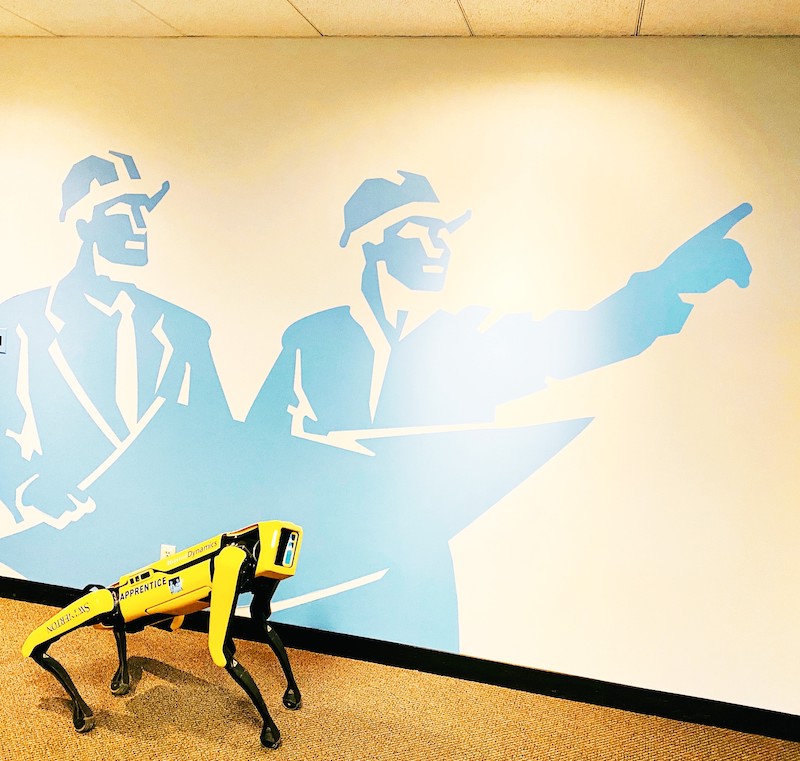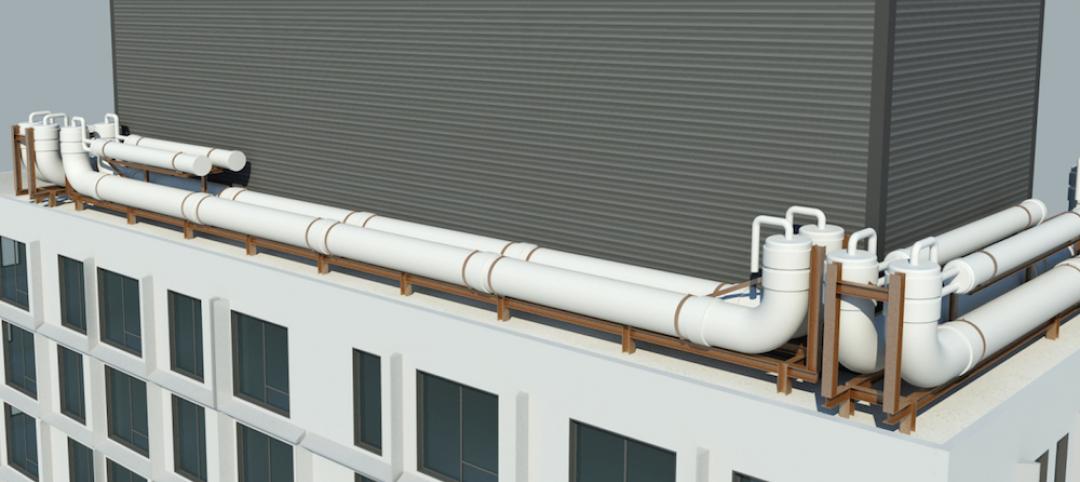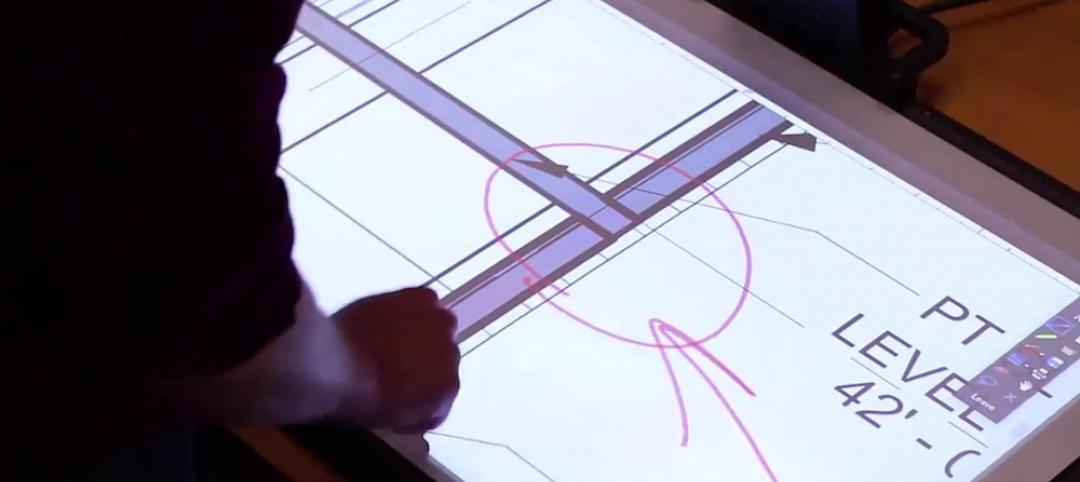Swinerton, the national construction services provider, is among the GCs that are embracing construction technology is various ways.
It is using high-definition 3D scanning technology to provide clients with such benefits as time-stamping work with preserved historical data, minimizing client travel thanks to remote walk-through capabilities, and coordinating subcontractors with an eye toward minimizing change orders and errors.
The firm’s prefab and modular construction capabilities leverage technology to reduce construction costs by as much as 20% per project, improve quality and safety, and expedite a project’s completion.
And on a number of its jobsites, Swinerton has been testing Boston Dynamics’ quadruped robot, better known as Spot Dog, for walk-throughs to inspect progress (such as tracking the numbers of studs or electrical conduit installed daily), measure and report data points, create a digital twin, and compare as-built to BIM.
Meet Spot Dog: The robotic inspection dog for construction jobsites
The three-foot-tall yellow robot “is an incredibly capable machine,” says Eric Law, Swinerton’s senior director of technology and innovation, whom BD+C interviewed last week with Tristen Magallanes, the firm’s innovation analyst; and Brian Ringley, a construction technology manager with Boston Dynamics.
Swinerton has been testing Spot Dog for four months. It used the robot to track the interior work within a ground-up medical office building in Redwood City, Calif. (That robot has since been relocated to one of Swinerton’s other projects in Austin, Texas.) The robot was also at work at the Queen Emma Building in Honolulu, Hawaii, where Swinerton is reconstructing an office building to affordable apartments.
The robot in use in Honolulu, which can handle a payload of up to 30 lbs., was equipped with a laser scanner and 360-degree camera. The robot, explains Ringley, can be controlled directly or tele-operated from offsite. There’s also an “auto-walk” feature where the user takes the robot to where he or she wants it to go, and artificial intelligence lets the robot repeats that pattern and tasks.
A video of Spot Dog in action in Honolulu can be viewed here.

Spot Dog, standing in front of Swinerton's brand image.
Law notes that a robot is better suited for capturing repetitive data because humans “have a hard time walking the same path everyday.” Spot Dog is also capable of navigating uneven terrain, and can be programmed to avoid obstacles.
Boston Dynamics has about 100 of these robots in the field, confirms Ringley, all of them under leases that typically run from six to 12 months. He declined to discuss lease terms, except to say “it’s cheaper than leasing a car.”
Spot Dog was expected to complete its work at the Honolulu project sometime this month and be relocated to roam another Swinerton project.
Ringley says that Boston Dynamics is constantly tweaking its robots for better mobility, stability, and autonomy. Boston Dynamics is preparing to launch a 2.0 version of Spot Dog “soon,” he says, without disclosing any details.
Related Stories
AEC Tech | May 10, 2016
Thornton Tomasetti launches new tech company
TTWiiN initially features six products and will add more via its own incubator.
AEC Tech | May 9, 2016
Is the nation’s grand tech boom really an innovation funk?
Despite popular belief, the country is not in a great age of technological and digital innovation, at least when compared to the last great innovation era (1870-1970).
Big Data | May 5, 2016
Demand for data integration technologies for buildings is expected to soar over the next decade
A Navigant Research report takes a deeper dive to examine where demand will be strongest by region and building type.
BIM and Information Technology | May 2, 2016
How HDR used computational design tools to create Omaha's UNO Baxter Arena
Three years after writing a white paper about designing an arena for the University of Nebraska Omaha, HDR's Matt Goldsberry says it's time to cherry-pick the best problem-solving workflows.
Virtual Reality | Apr 29, 2016
NBBJ to develop virtual reality productivity platform
The Seattle design firm has partnered with Visual Vocal, a startup VR company.
Drones | Apr 25, 2016
The Tremco SkyBEAM UAV is the first to be approved by the FAA for nighttime commercial operation
The SkyBEAM UAV is used for identifying energy leaks, rooftop damage, deteriorating façades, and safety issues without requiring scaffolding or cranes.
AEC Tech | Apr 15, 2016
Should architects learn to code?
Even if learning to code does not personally interest you, the growing demand for having these capabilities in an architectural business cannot be overlooked, writes computational design expert Nathan Miller.
Building Tech | Apr 12, 2016
Should we be worried about a tech slowdown?
Is the U.S. in an innovative funk, or is this just the calm before the storm?
AEC Tech | Apr 12, 2016
Startup introduces PaperLight, an interactive projection screen for AEC pros
The device lets users edit sketches, plans, and images with a stylus or their fingers.
AEC Tech | Mar 31, 2016
Deep Learning + AI: How machines are becoming master problem solvers
Besides revolutionary changes to the world’s workforce, artificial intelligence could have a profound impact on the built environment and the AEC industry.

















